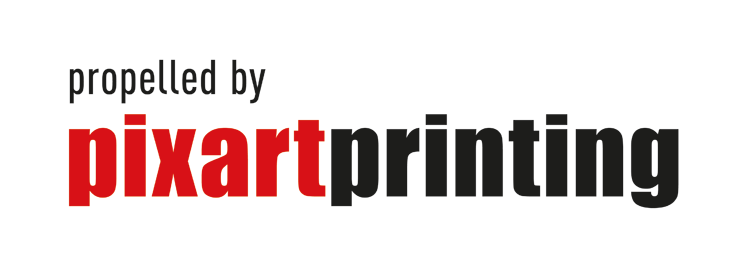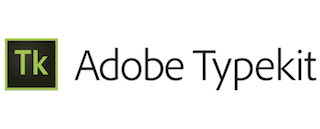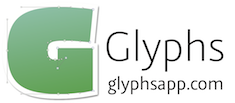Conference
June 3, 2016

You can see his latest fonts on his website and follow him on twitter.
The representation of digital fonts by outlines is the invention that made digital typography practical. It became possible for typefaces to be imaged on “any” digital device. This innovation has had a major effect on type design and typography. Solutions to technical puzzles presented by the technology of outlines have opened up many new pathways and led type designers to explore new conceptual approaches. This presentation will examine some of the major ways in which type design has been moved forward as a consequence.

She is a founding partner at Incipit – a new design brand, totally made in Italy by young designers – and at CAST, and Italian digital type foundry.
In the span of roughly a century the typographic practice in Italy evolved from being a craft perfected by the skills of Giambattista Bodoni to being fully mechanised. While there are books and essays about the printer from Parma and the Nebiolo company in Turin, not much is known of the century in between the two. How come Nebiolo become one of the most important Italian factories in the early 20th century, aggressively incorporating almost all the possible competitors across the nation? Who were them? While Italy was slowly becoming a unified and independent nation, we will meet along the way visionary publishers, patriotic printers, unlucky punchcutters, forgotten type foundries and authors of typographic manuals.
And of course lot of interesting type.

You can see his latest works on his website and follow him on twitter.
People didn't always create fonts in their spare bedrooms. How did this happen? When did this change? What did type designers do before they had computers and Twitter accounts? Independent type designer Mark Simonson will talk about the job of the type designer and how it has evolved over the last 500 years, from punch cutting to pantographs to process cameras to PostScript and Python.

You can see his latest works on his website and follow him on twitter.
For at least twenty years, the end of typography is happening any minute now. Various developments in technology and changes in our habits are supposed to kill it off. Similar claims have been made for typography's esoteric offspring, typeface design. And yet, both are not only surviving as activities, but they are positively thriving: more people are interested, more are talking and reading about typography, and more people are going to more events (like this one). So, what's the secret? This talk is about typography's secret power: what regenerates it after every call for doom, and draws ever more people in. It is a talk about a one-way street, where once typography becomes part of your world, there is no way out. Zombies indeed.

You can see his latest fonts on his website and follow him on twitter.
In the lecture i will talk about the reasons i think there is a need to constantly create typefaces and why i continue to design them. why I think so much about the names I give them, continue to put strange conceptual / political ideas into something as essentially apolitical as a letterforms. finally i will go down to a macro level with one of my most well known fonts ‘mason’ and explain the influences on a series of letterforms from the fonts.
I will also show some of the collaborative work with david bowie using the fonts i have designed. highlighting the creative process between myself and bowie. then how these designs are used in all areas of the album publicity and the reactions when the albums were released.

You can find a list of all his articles on his blog, and follow him on Twitter.
The web is full of text to be read: customer reviews, industry reports, social network updates, blog posts, newspapers, magazines, email and so on. Some of that text is well designed and provides a pleasant, engaging experience for the reader (of course far more of it doesn't). But how much of that text - even the well designed bits - really grabs the reader's attention and sets their mood for what it is to follow? This talk will be a call to arms for more websites to do just that. What we need is more websites with engaging, appropriate, distinctive, expressive and readable web typography (which adapts for screens of all shapes. sizes and capabilities).

Mark is currently the Design Director at Monotype following the acquisition of his small design studio, Mark Boulton Design. Previously, Mark Boulton Design worked with global media companies such as ESPN and Al Jazeera; small brands with big stories like Hiut Denim; technology organisations such as Drupal and Alfresco; and home to the greatest scientific experiment on earth, CERN. Living in Wales with his wife and two small children, Mark likes nothing more than riding up hills on his bike, trying to cook Japanese food, and consistently moaning about the design of bathroom taps.
You can read his latest thought on his website and follow him on twitter.
Gone are the days of knowing what our content is, where and when it’s being displayed, and what our users might be doing at the time. We’re all designing systems now. Modular bit and pieces designed to fit together flawlessly and responsively whenever the user needs it. Or are we happy designing in abstraction without getting our hands dirty with the real problems of web design: People problems, technology problems, content problems.
Mark has been involved in large scale publishing design systems for decade or so, and In this talk, Mark will walk through the challenging design systems he’s been involved with.

He was born in Milan, in 1978, the city where he still lives and has his own studio working as a freelance graphic designer and calligrapher. Letters are the main ingredient of his creations. The means of his work is to make the manual skill of an ancient art as writing and the languages and instruments of the digital era coexist. His study into lettering led him to experience from graffiti to classic calligraphy, up to big wallpainting, typography and letterpress printing.
Among the brands that requested his lettering we can number Carhartt, Nike, Mondadori, Zoo York, Dolce & Gabbana, Sony BMG, Seat, Volvo, Universal, Eni, Mont Blanc, Wall Street Institute.
He has been teaching calligraphy with the Associazione Calligrafica Italiana since 2007 and he holds workshops and lectures in several cities.
He has exhibited his works in many European galleries in personal exhibitions and collective ones. His works are included in many permanent collection such as: Berliner Akademie der Kunst, Harrison Collection and San Francisco Public Library. In 2012 he published his first monographic book Take Your Pleasure Seriously by Lazy Dog press.
You can see his latest works on his website and follow him on twitter.
A powerful way to communicate and one of the biggest human conquest
. That’s writing at first thought.
But writing is also a deep personal and instinctive act: while writing our mind flows by just like our hand moves on the paper. That’s why time spent doing calligraphy is so special. There's an intense dialogue between your mind and your body, that steps through your breath, in the exact moment you leave a mark with ink on paper. Writing is a kind of filter to see through everyday’s life things and a sort of huge but simple metaphor of our passage on the earth.
The future of handwriting and his function with digital devices diffusion is a big question nowadays: Luca's approach is to share calligraphy as much as he can. Luca Barcellona inspired many young lettering enthusiasts and demonstrating through his wide range of artistic and commercial works, that handwriting is more than alive.

















